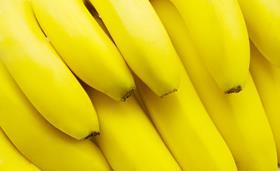
Costa Rica’s national banana corporation, Corbana, the institutional banana council (CIM) and banana environmental commission (CAB), have refuted claims made by researchers that the banana industry is responsible for traces of illegal pesticides found in certain species of caiman.
Paul Grant of Stellenbosch University in South Africa and his team of researchers found traces of nine different inputs in blood samples from 14 adult caiman in Suerte River. Seven of those identified are listed as persistent organic pollutants banned under the 2011 Stockholm Convention.
Their research showed that the caiman within the high intensity-banana crop watershed of theriver had higher pesticide burdens relative to other more remote locations. They published their findings in the online scientific journal Environmental Toxicology & Chemistry and believe the findings could indicate illegal pesticide use, or residues of previous sprayings before the ban was in place.
Grant said the study suggests that either pesticides pose a health risk to caiman, or that pesticides harm the habitat and food supply of caiman, thereby reducing the health of this species. In addition, pesticide traces in caimans as top-level predators could indicate an integrated assessment for the ecosystem on a wider scale.
He said: “Banana plantations may be economically important to Costa Rica; however their erosion of aquatic ecosystems highlights the need for a developed regulatory infrastructure and adequate enforcement.
“Frequent heavy rains can wash pesticides from plantation areas, leading to contamination and the reapplication of sprays to the crops.”
He added: “Without adequate enforcement of regulations dangerous practices such as aerial spraying close to streams or washing application equipment in rivers also contributes to contamination downstream.”
But the banana industry is outraged at the accusations, which it says are not based on sound science. A spokeswoman said: “It’s true that Costa Rica has a series of microclimates that facilitate the presence of a large number of banana pests and diseases which require agrochemical products to control them. But it is also true that Costa Rica decided more than 20 years ago to change radically the way it grows bananas to become the first country in the world to produce in harmony with the environment and its workers.”
She also pointed to the fact that 98 per cent of Costa Rican banana farms have environmental certification and in keeping with national legislation respect 30 metre buffer zones between their farms and rivers to prevent run-off of chemical inputs into watercourses.
“Corbana will fight to the bitter end to defend the image of an industry that generates more than 100,000 jobs and $750 million a year in foreign earnings and demonstrate that this study contains misleading conclusions.”
Costa Rica exports an average of 1.8 million tonnes of bananas per year, accounting for 10 per cent of the world total.
(Additional reporting by Kathy Hammond)






No comments yet